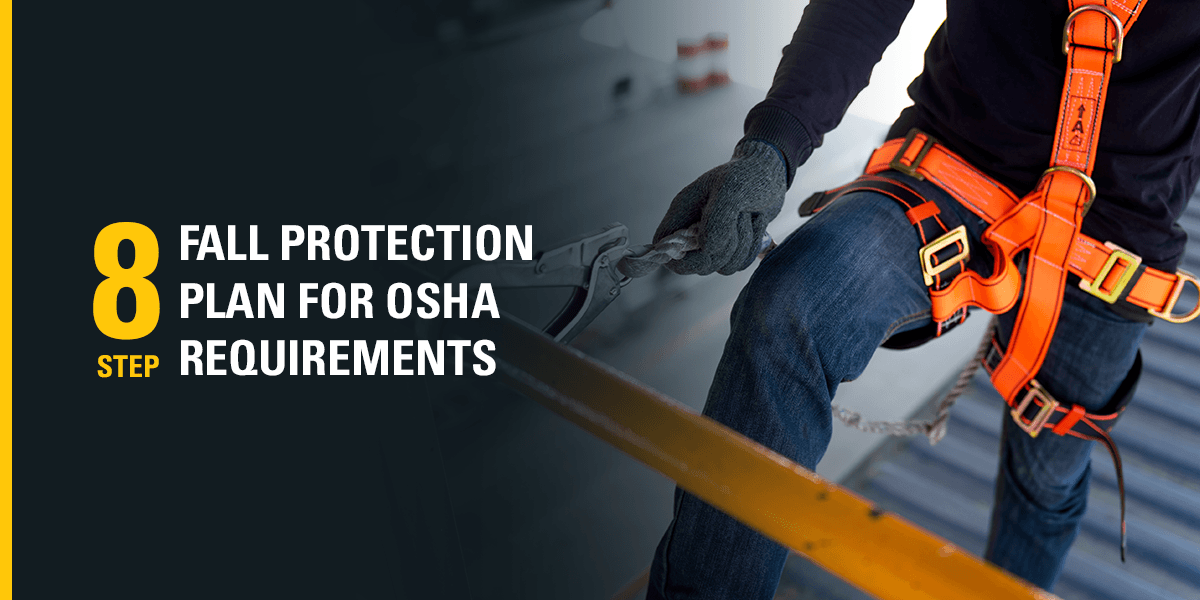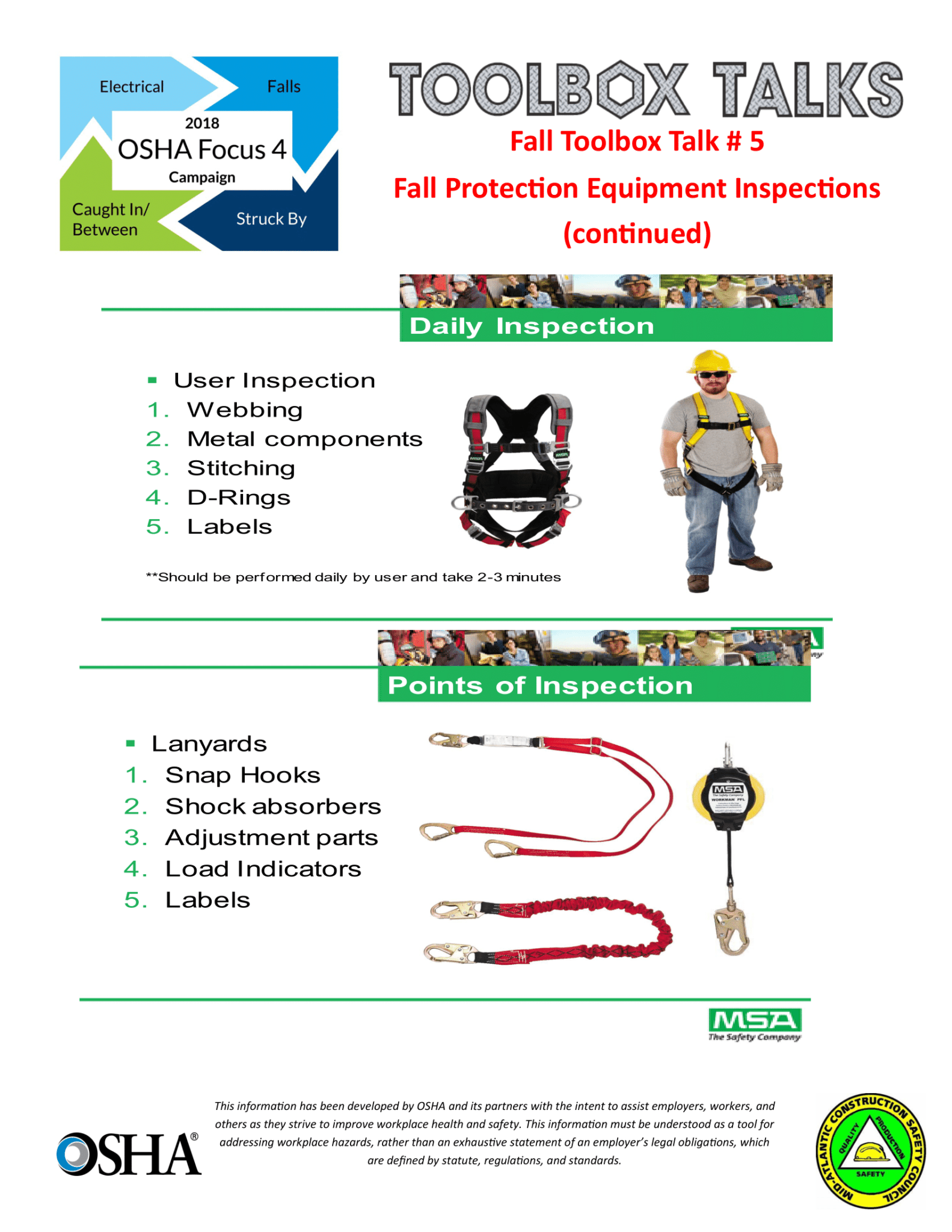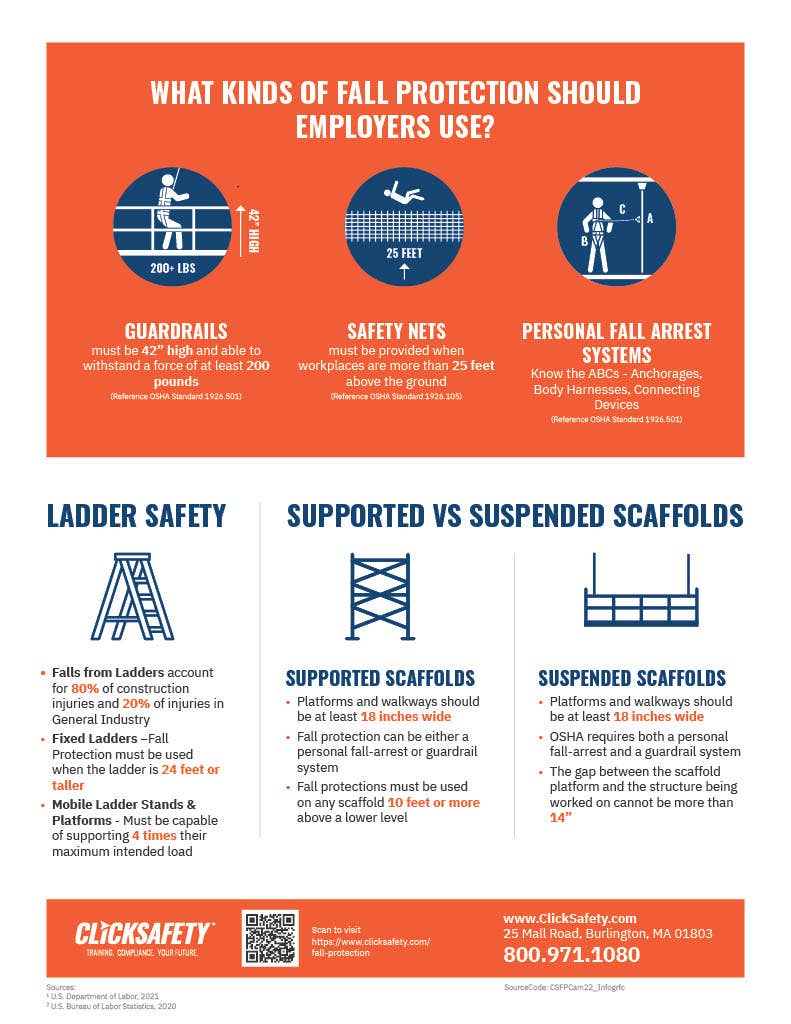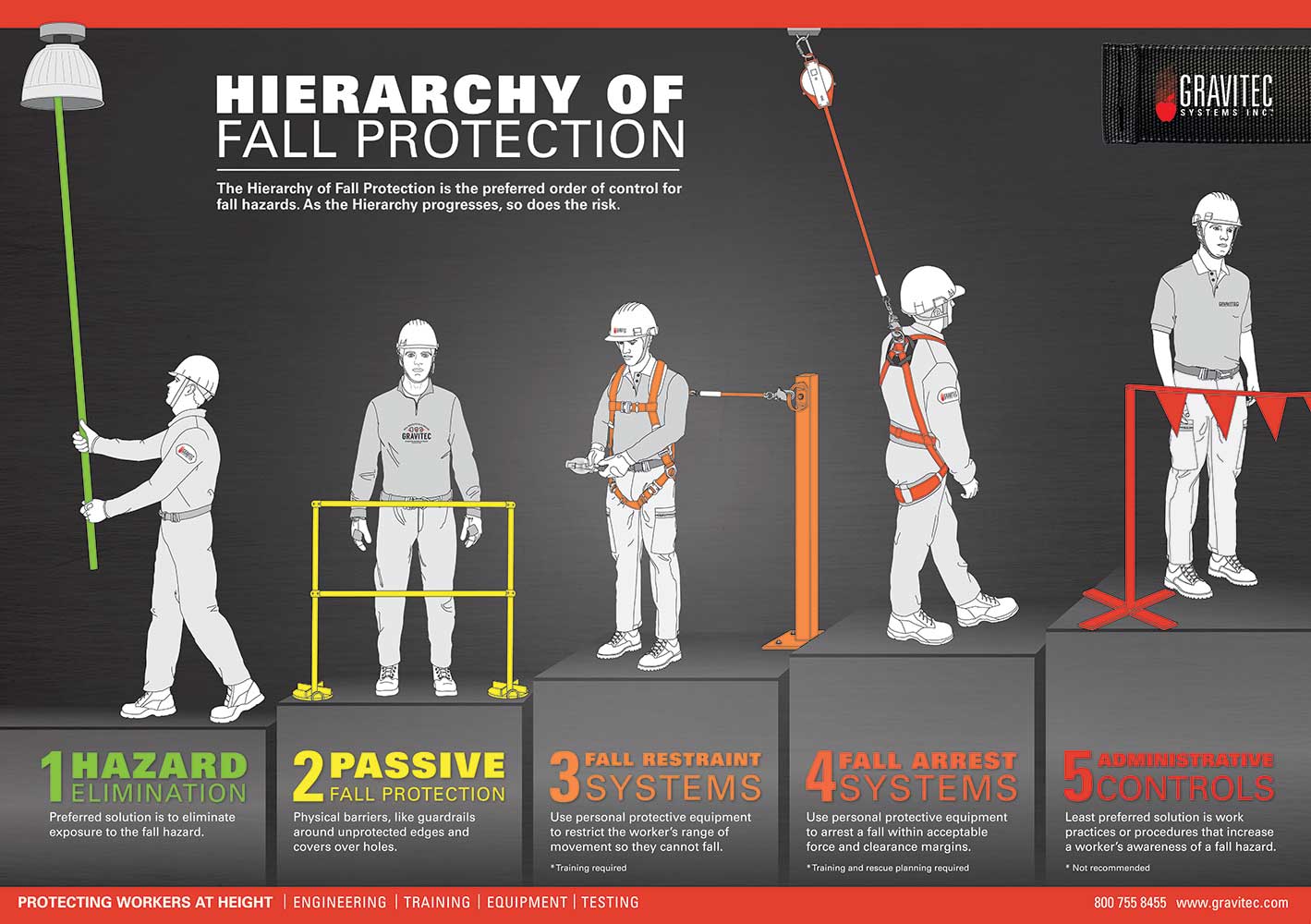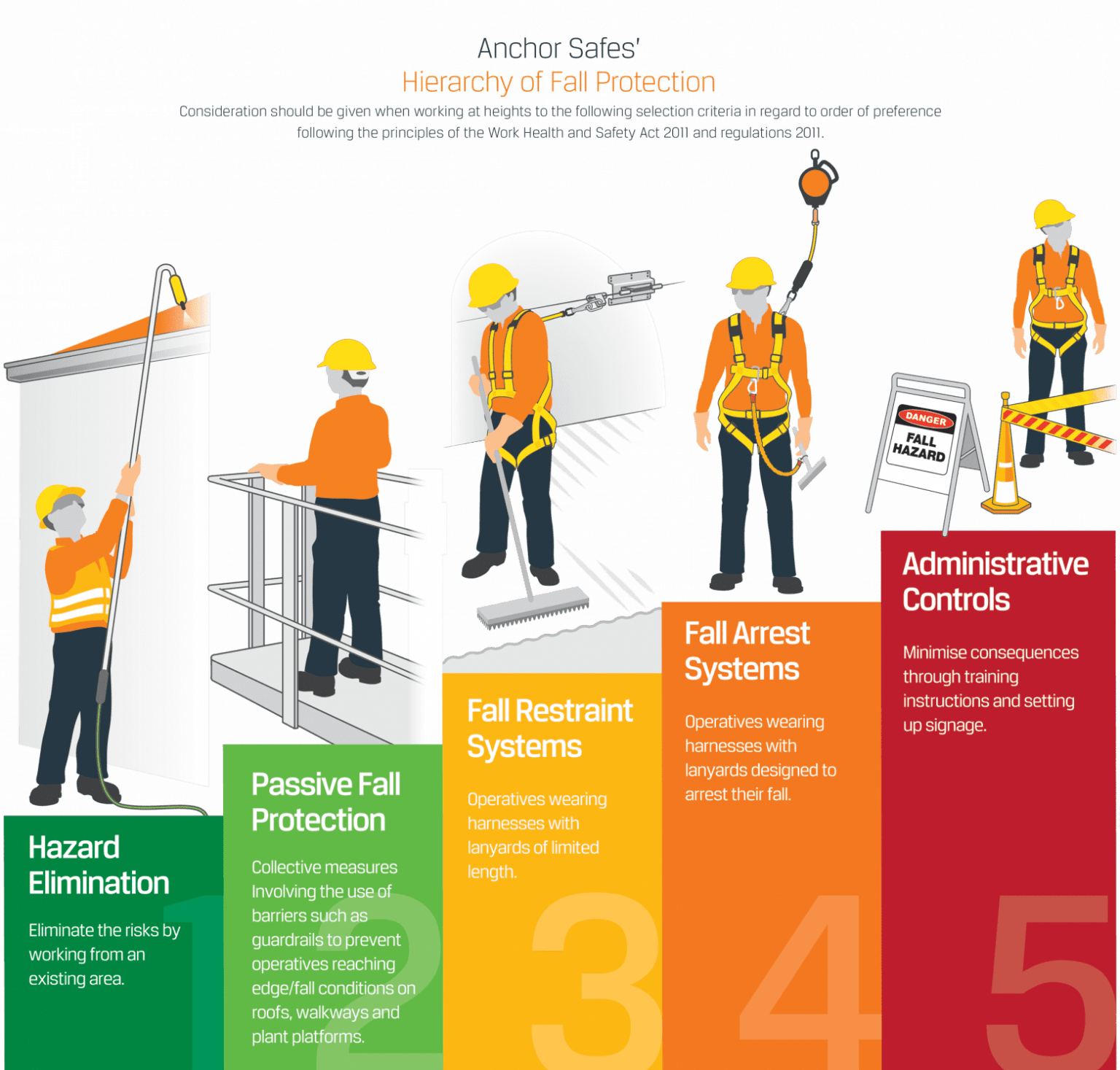Osha Fall Arrest Requirements - Ansi/asse z359.1, safety requirements for personal fall arrest systems, subsystems and component. Conventional fall protection, such as guardrail systems, safety net systems, or personal fall arrest systems, must be used to protect. Every part of a personal fall. Osha rules say fall arrest systems must limit force to 1,800 pounds to keep workers safe when they fall. In general, osha's fall protection standard requires that anyone working at heights of 6 feet or more be provided with fall. This standard establishes performance, care, and use criteria for all personal fall protection systems, such as body harnesses, lanyards,. This section establishes performance, care, and use criteria for all personal fall protection systems. The employer must ensure that each.
Ansi/asse z359.1, safety requirements for personal fall arrest systems, subsystems and component. Conventional fall protection, such as guardrail systems, safety net systems, or personal fall arrest systems, must be used to protect. This section establishes performance, care, and use criteria for all personal fall protection systems. In general, osha's fall protection standard requires that anyone working at heights of 6 feet or more be provided with fall. Every part of a personal fall. This standard establishes performance, care, and use criteria for all personal fall protection systems, such as body harnesses, lanyards,. The employer must ensure that each. Osha rules say fall arrest systems must limit force to 1,800 pounds to keep workers safe when they fall.
Every part of a personal fall. In general, osha's fall protection standard requires that anyone working at heights of 6 feet or more be provided with fall. This standard establishes performance, care, and use criteria for all personal fall protection systems, such as body harnesses, lanyards,. Osha rules say fall arrest systems must limit force to 1,800 pounds to keep workers safe when they fall. The employer must ensure that each. Conventional fall protection, such as guardrail systems, safety net systems, or personal fall arrest systems, must be used to protect. This section establishes performance, care, and use criteria for all personal fall protection systems. Ansi/asse z359.1, safety requirements for personal fall arrest systems, subsystems and component.
8 Step Fall Protection Plan for OSHA Requirements Rigid Lifelines
This standard establishes performance, care, and use criteria for all personal fall protection systems, such as body harnesses, lanyards,. Ansi/asse z359.1, safety requirements for personal fall arrest systems, subsystems and component. Every part of a personal fall. Conventional fall protection, such as guardrail systems, safety net systems, or personal fall arrest systems, must be used to protect. Osha rules say.
The OSHA Fall Protection Equipment and Fall Clearance Calculations
Ansi/asse z359.1, safety requirements for personal fall arrest systems, subsystems and component. Every part of a personal fall. The employer must ensure that each. This section establishes performance, care, and use criteria for all personal fall protection systems. Conventional fall protection, such as guardrail systems, safety net systems, or personal fall arrest systems, must be used to protect.
OSHA Focus Four Toolbox Talk Fall Protection Equipment Inspections
This section establishes performance, care, and use criteria for all personal fall protection systems. Conventional fall protection, such as guardrail systems, safety net systems, or personal fall arrest systems, must be used to protect. Osha rules say fall arrest systems must limit force to 1,800 pounds to keep workers safe when they fall. The employer must ensure that each. Ansi/asse.
Fall Protection Osha Cheat Sheet
Conventional fall protection, such as guardrail systems, safety net systems, or personal fall arrest systems, must be used to protect. This section establishes performance, care, and use criteria for all personal fall protection systems. Every part of a personal fall. In general, osha's fall protection standard requires that anyone working at heights of 6 feet or more be provided with.
OSHA Personal Fall Arrest Systems Standards Are No Joke!
This section establishes performance, care, and use criteria for all personal fall protection systems. Ansi/asse z359.1, safety requirements for personal fall arrest systems, subsystems and component. In general, osha's fall protection standard requires that anyone working at heights of 6 feet or more be provided with fall. Osha rules say fall arrest systems must limit force to 1,800 pounds to.
OSHA Fall Protection Standards The Facts ClickSafety
This standard establishes performance, care, and use criteria for all personal fall protection systems, such as body harnesses, lanyards,. Ansi/asse z359.1, safety requirements for personal fall arrest systems, subsystems and component. Osha rules say fall arrest systems must limit force to 1,800 pounds to keep workers safe when they fall. This section establishes performance, care, and use criteria for all.
Osha Roof Fall Protection Rules at Andy Kessinger blog
Conventional fall protection, such as guardrail systems, safety net systems, or personal fall arrest systems, must be used to protect. This section establishes performance, care, and use criteria for all personal fall protection systems. This standard establishes performance, care, and use criteria for all personal fall protection systems, such as body harnesses, lanyards,. Every part of a personal fall. Ansi/asse.
Using the Hierarchy of Control for Working at Heights Anchor Safe
This section establishes performance, care, and use criteria for all personal fall protection systems. In general, osha's fall protection standard requires that anyone working at heights of 6 feet or more be provided with fall. Ansi/asse z359.1, safety requirements for personal fall arrest systems, subsystems and component. Conventional fall protection, such as guardrail systems, safety net systems, or personal fall.
OSHA 10 Fact Sheet Fall Protection Occupational Safety And Health
This section establishes performance, care, and use criteria for all personal fall protection systems. Conventional fall protection, such as guardrail systems, safety net systems, or personal fall arrest systems, must be used to protect. Every part of a personal fall. In general, osha's fall protection standard requires that anyone working at heights of 6 feet or more be provided with.
Osha Fall Protection Standard Ensuring Workplace Safety
In general, osha's fall protection standard requires that anyone working at heights of 6 feet or more be provided with fall. This section establishes performance, care, and use criteria for all personal fall protection systems. Ansi/asse z359.1, safety requirements for personal fall arrest systems, subsystems and component. The employer must ensure that each. Every part of a personal fall.
Ansi/Asse Z359.1, Safety Requirements For Personal Fall Arrest Systems, Subsystems And Component.
This section establishes performance, care, and use criteria for all personal fall protection systems. Every part of a personal fall. In general, osha's fall protection standard requires that anyone working at heights of 6 feet or more be provided with fall. This standard establishes performance, care, and use criteria for all personal fall protection systems, such as body harnesses, lanyards,.
The Employer Must Ensure That Each.
Osha rules say fall arrest systems must limit force to 1,800 pounds to keep workers safe when they fall. Conventional fall protection, such as guardrail systems, safety net systems, or personal fall arrest systems, must be used to protect.
